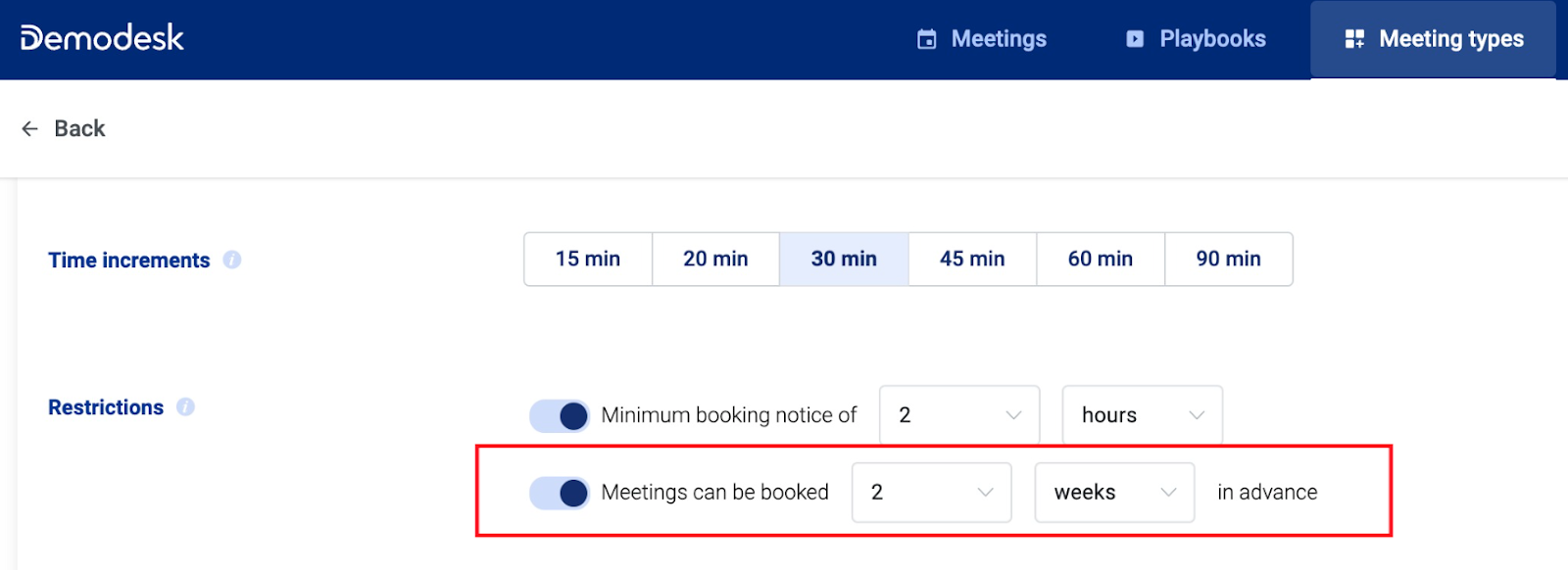Unseen yet pervasive, no-shows in sales meetings are silently draining your company's lifeblood—its revenue. Imagine a salesperson, let's call her Anna. Every day, Anna spends hours researching leads and preparing for calls - tasks that consume a good 20% of her working week. But often, Anna faces a puzzling challenge: her scheduled meetings vanish into thin air, and her leads simply don't show up. This isn't just a minor setback; it's a ripple effect that eats away at her productivity and, more crucially, her earnings.
Picture this: Anna loses about 5% of what she could have earned that week for every meeting that doesn't happen.
And it's not just about the numbers, however. There's a human side to this story - the sheer disappointment, the morale taking a hit, it's deeply discouraging.
Now, consider a product like Demodesk Scheduling. It tackles this very issue head-on, reducing no-show rates to a remarkable low of just 2%. How, you ask? That's a journey worth exploring, a strategy that could change the game for Anna and countless others in her shoes. Let's dive into this world, unraveling the mystery of no-shows and discovering how to master them, much like Demodesk did.
Understanding the 'Why' Behind No-Shows
In a quest to unravel the mysteries behind the frequent absence of potential clients from scheduled sales meetings, MarketingProfs embarked on a revealing journey. Their study unearthed a simple yet profound truth: the foremost reason for these no-shows is the bustling rhythm of life. Astonishingly, 66% of prospective clients missed their appointments, not out of disinterest but because they were swamped with internal commitments, as per MarketingProfs' findings from 2019.
This phenomenon is understandable. Our days are often a whirlwind of tasks and responsibilities. Despite good intentions, individuals may find themselves ensnared in other pressing matters, leading to an unavoidable no-show. Therefore it is very important to stay very close to the prospective clients before a scheduled meeting.
Streamline your booking process
Demodesk is a solution for that offering a seamless way for leads to carve out a time slot that harmoniously aligns with their bustling schedules.

Picture this scenario: A lead, intrigued by your offerings, visits your website with the intention of arranging a demo with a sales representative. Upon expressing their interest through a form, Demodesk unveils a calendar, allowing them to pick a time that resonates with their agenda.

Upon selection, the lead is deftly guided to the right sales representative, adhering to either pre-set rules or a balanced round-robin system. This meeting effortlessly finds its place in the rep's calendar, setting the stage for a potentially fruitful engagement.
Providing the liberty for leads to tailor meeting times to their schedules could be the masterstroke in mitigating the puzzle of no-shows.
Use shorter calendar slots
The duration of a meeting is another significant factor affecting no-show rates. Studies indicate that leads are more inclined to attend shorter meetings, which demand less of their time compared to lengthier sessions. Specifically, there's a 12% higher chance of a prospect attending a first meeting if it's scheduled for 30 minutes rather than 60 minutes. Shorter durations, such as 15 or 20 minutes, could reduce no-show rates even more.
It's essential, however, to maintain the quality of the meeting by rushing and skipping critical topics. Representatives should be mindful of the meeting length and avoid unnecessary elements that prolong it. Transparency with leads about the expected duration of the meeting is also vital. Informing them of the meeting length at the time of scheduling sets clear expectations.
Tools like Demodesk facilitate this process by allowing you to communicate the exact duration of the meeting from the outset. Adhering to a maximum limit of 30 minutes for meetings can significantly lower the likelihood of no-shows.
Keep the urgency up
The longer the interval between when a lead books an appointment and its actual date, the higher the risk of a no-show. This is because leads tend to either forget or deprioritize the meeting over time. Echoing Steli Efti's insights from Close.com, while prospects might be eager to set up a meeting next month when their schedule seems open, as the days roll by, their calendar gets busier, diminishing the priority of your initial meeting.
To counteract this, adjust your scheduling settings to limit the lead's booking window to the upcoming two weeks. This timeframe strikes a perfect balance, offering leads sufficient flexibility to find a convenient slot while still being close enough to keep the meeting fresh in their memory.

Implementing this is straightforward with Demodesk. Use the 'Availability' feature to set how far in advance events can be scheduled and limit it to a two-week period.
Use Automated Reminders
To effectively reduce no-shows, consider utilizing automated email reminders, strategically timed to keep your meeting top-of-mind for leads. Here's the process:
- Initiate a Reminder Sequence: Set up a series of reminders designed to keep the upcoming meeting prominent in the lead's thoughts. For instance, arrange for a reminder to be dispatched one hour before a scheduled demo.
- Customize Your Message: Craft a personalized message that the lead will receive an hour before the meeting, allowing them adequate time to prepare.
- Add an Additional Reminder: To decrease the likelihood of a no-show further, implement a second automated message, set to be sent one minute before the demo begins.
- Final Touch with Personalization: The lead receives this last, customized message just one minute prior to the meeting, serving as a gentle yet effective nudge.
This approach is not only polite and subtle but is also highly effective in ensuring most leads are present for their appointments, thus minimizing no-shows. Demodesk offers an advanced reminder functionality that is fully customizable, enabling you to tailor the reminder sequence to best suit your needs and preferences.
Reintegrate Prospects into the Sales Pipeline
At times, persuading a prospect to reschedule a missed meeting proves futile, mainly when a considerable time lapse follows the no-show. In such instances, the most strategic move is to reintegrate these prospects back into the sales pipeline. By doing so, you maintain the connection and continue nurturing the relationship. This approach keeps the door open for future interactions, allowing you to reconnect with the prospect when the timing becomes more opportune. It's about keeping the lines of communication active, and the prospect engaged, even if the immediate opportunity has slipped.
Keep a Vigilant Eye on No-Show Rates
Dealing with no-shows in sales meetings is an inevitable challenge, but it's essential to keep an eye on how often they occur. Regular monitoring of no-show rates is a crucial strategy for pinpointing communication breakdowns and finding effective ways to boost attendance at meetings. Companies should strive to maintain a no-show rate below 20%. However, even if your rate is already under this threshold, there's room for improvement.
Utilizing a dedicated meeting scheduling platform like Demodesk is effective in tracking these rates, offering insights into the frequency of no-shows. Additionally, it can be a beneficial tool for Sales Development Representatives (SDRs) to analyze patterns and identify common traits among prospects who tend to miss sales meetings.
FAQs
What's the average no-show rate for sales meetings?
Typically around 20-30%.
How low can you realistically get your no-show rate down to?
You can aim to reduce your no-show rate as low as 2% for B2B and about 10% for B2C.
What are some specific techniques for how to handle no-shows?
- Ease of Scheduling: Make it simple to book and reschedule.
- Urgency and Relevance: Schedule within 14 days of booking.
- Conciseness: Keep meetings short, ideally under 30 minutes.
- Automated Reminders: Use them to maintain engagement and interest.
How to avoid No-Shows successfully
Regardless of the expertise and proficiency of your sales team, experiencing no-shows is an unavoidable aspect of the job. This is an inescapable reality. Therefore, it's crucial to be equipped with practical strategies for managing no-shows, which involve preventive actions and adept handling when a lead unexpectedly cancels. By implementing the techniques I've detailed in this article, you can significantly reduce your no-show rates and effectively reschedule with those who miss their initial appointments.
Discover how Demodesk can enhance your inbound meeting numbers and reduce no-show incidents.



%201.png)






